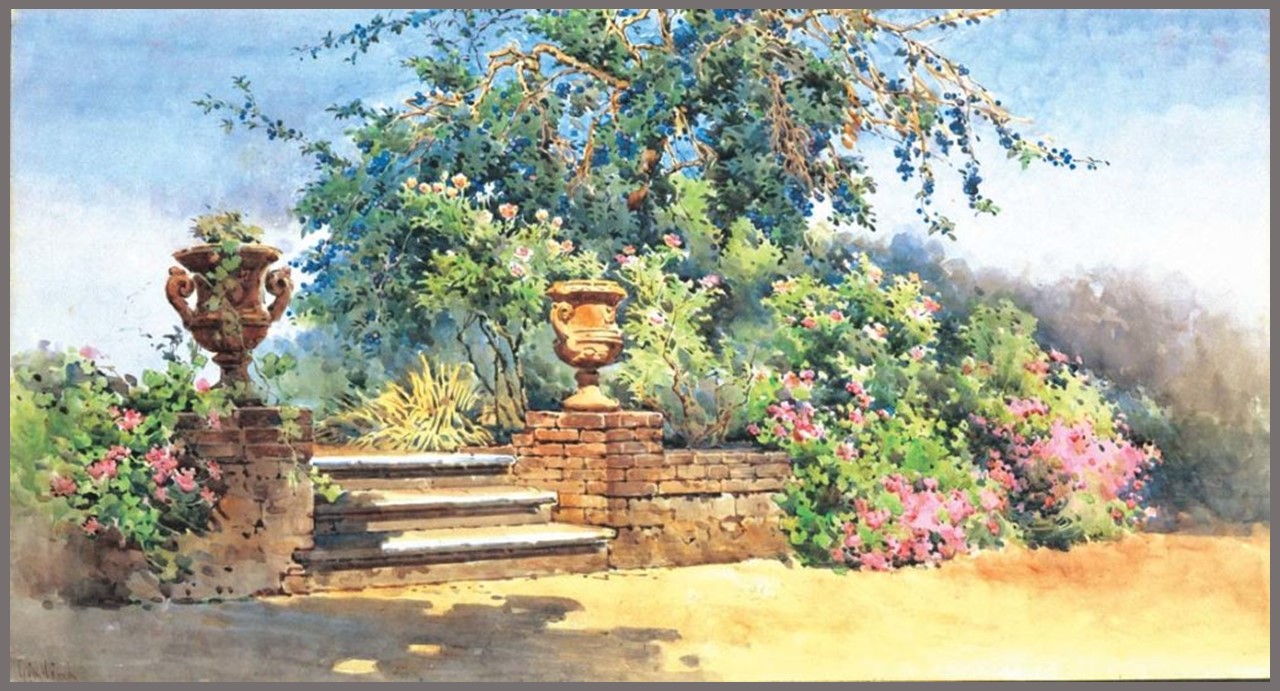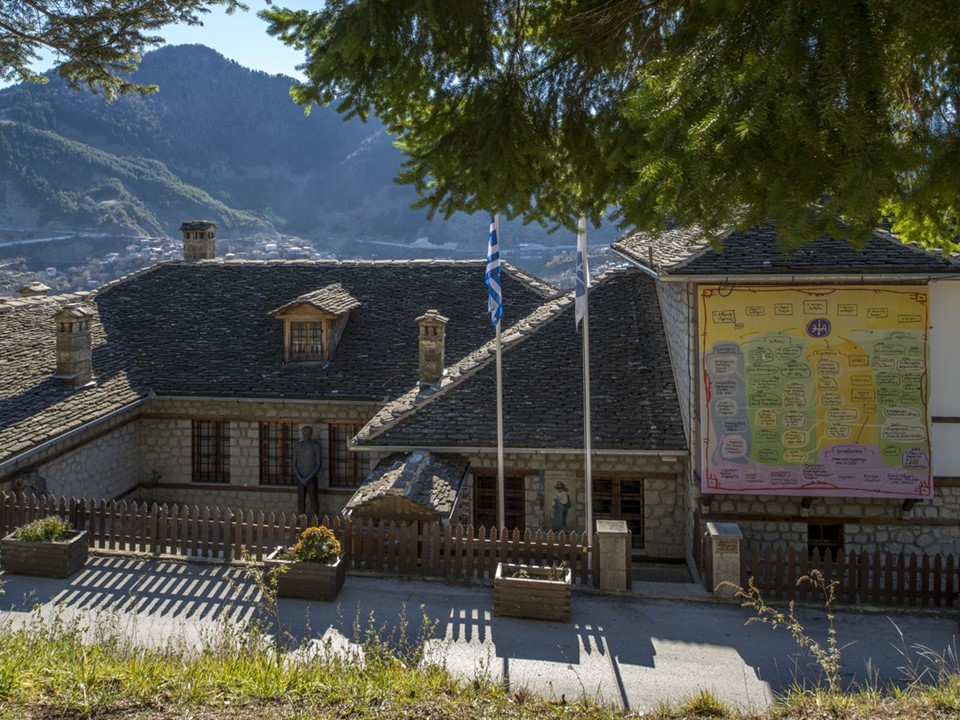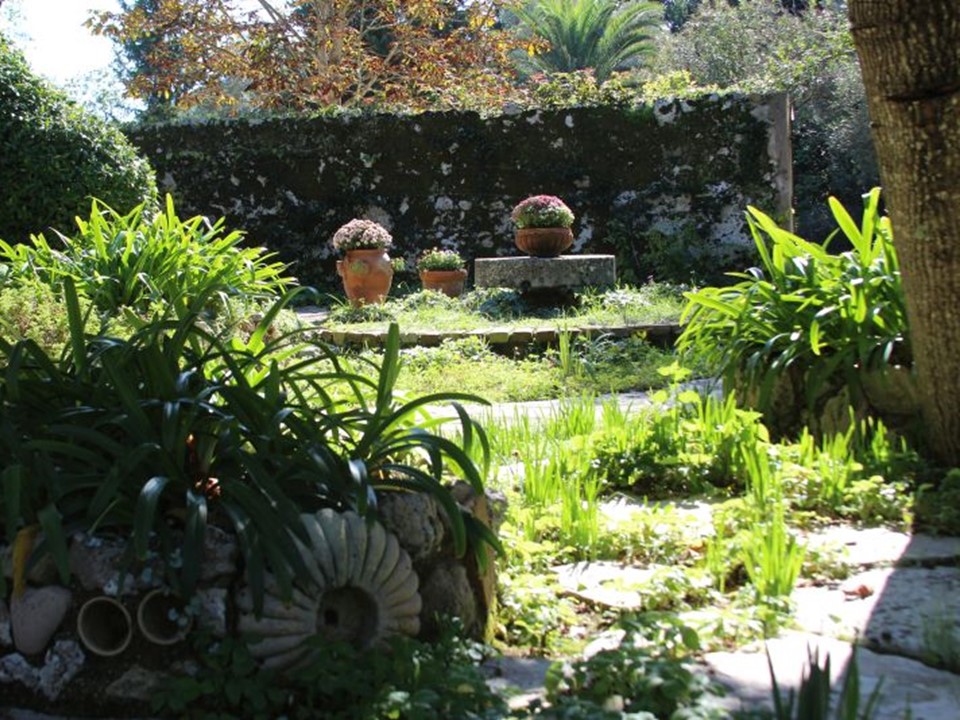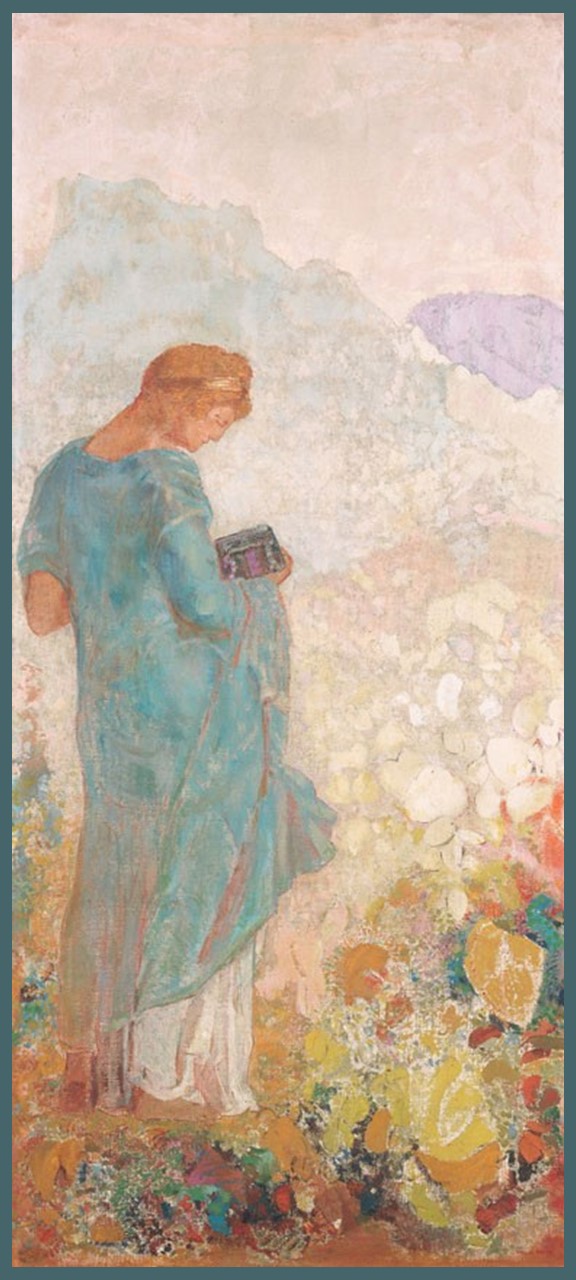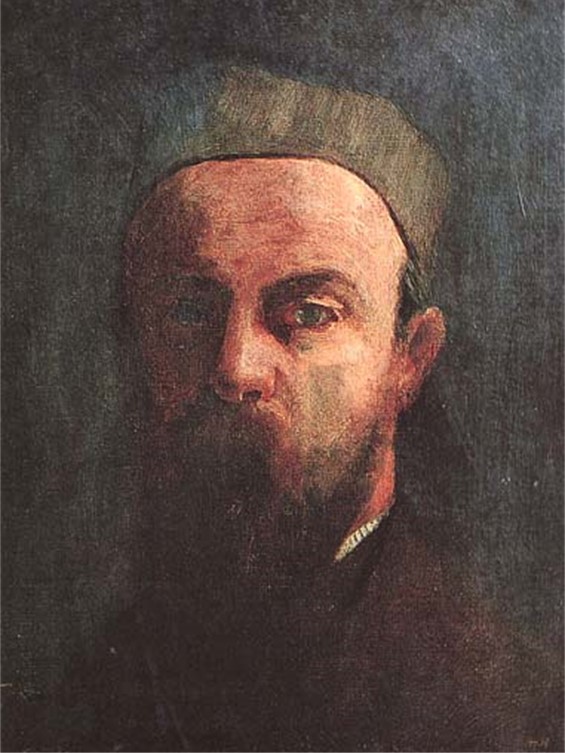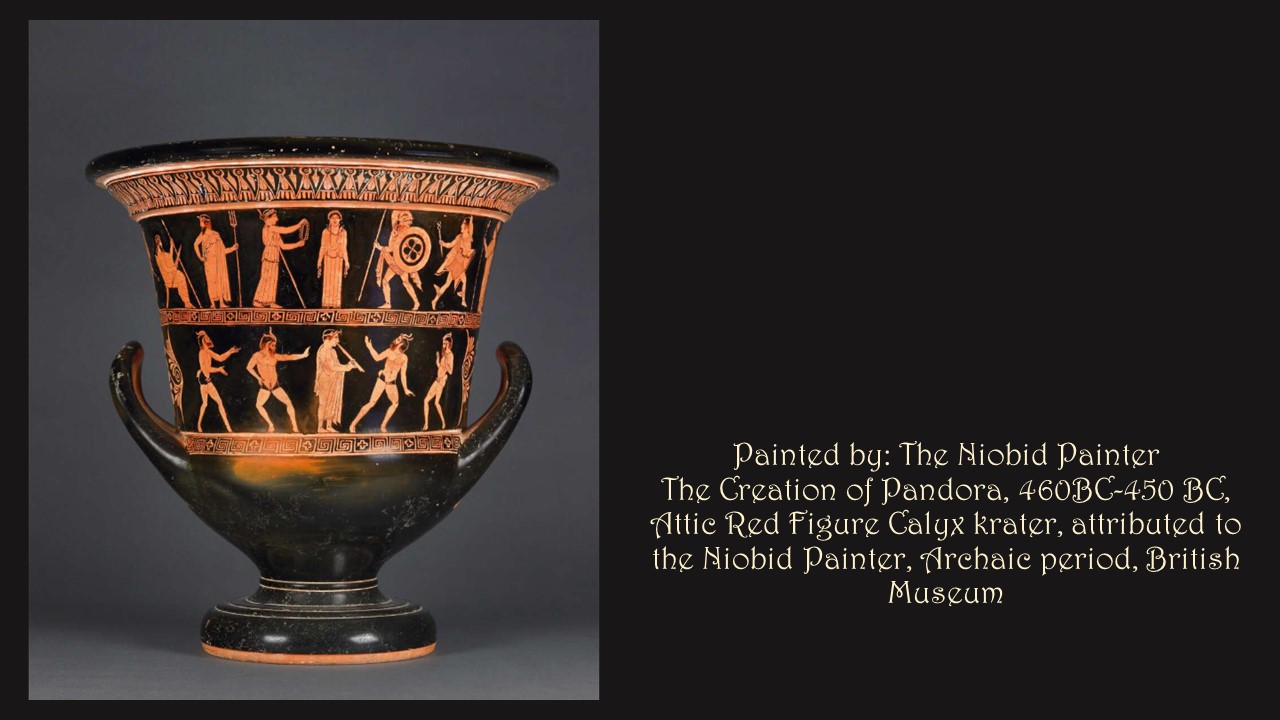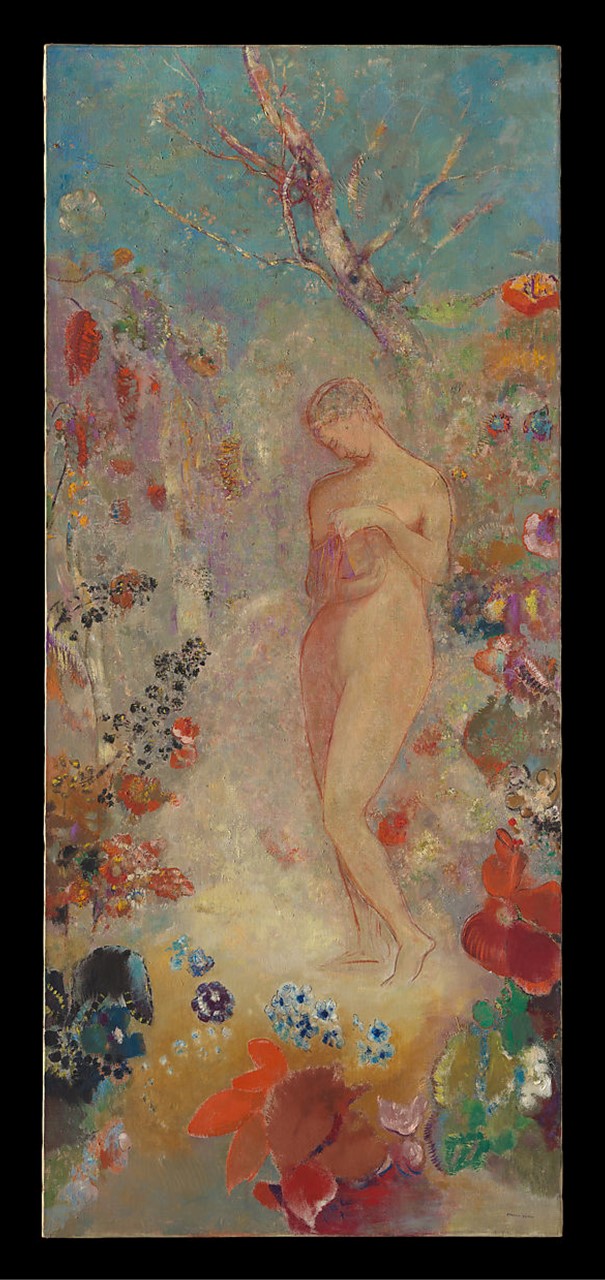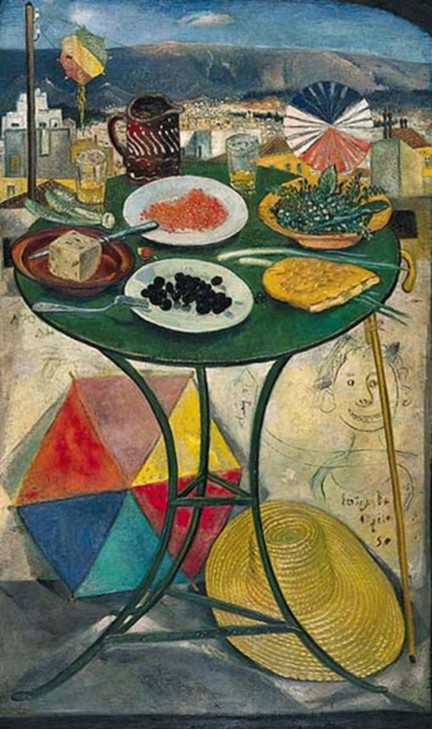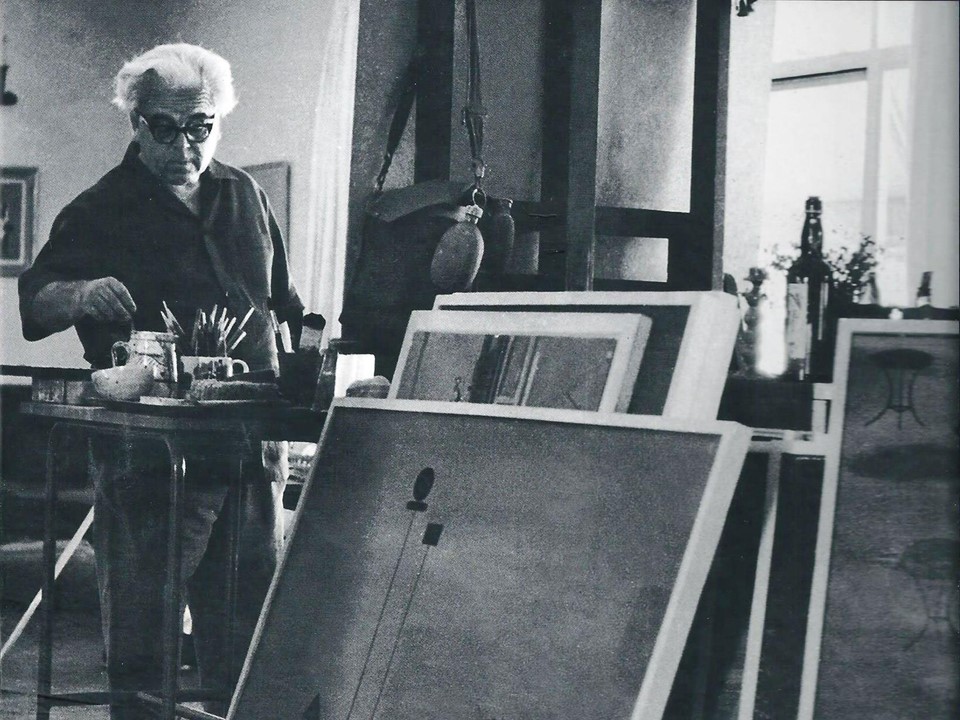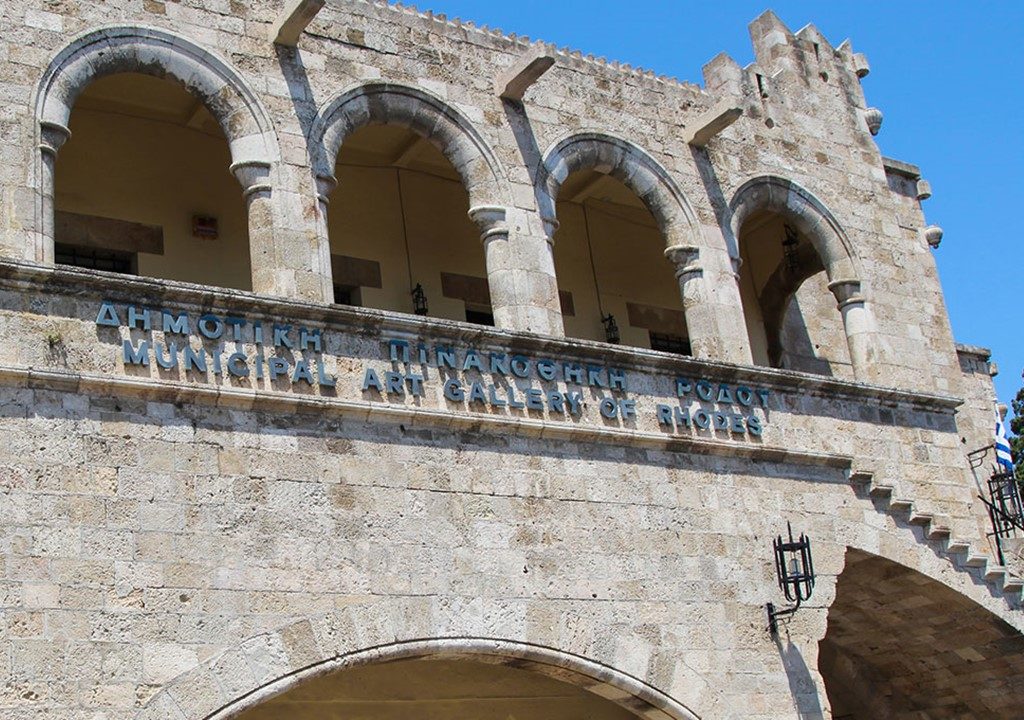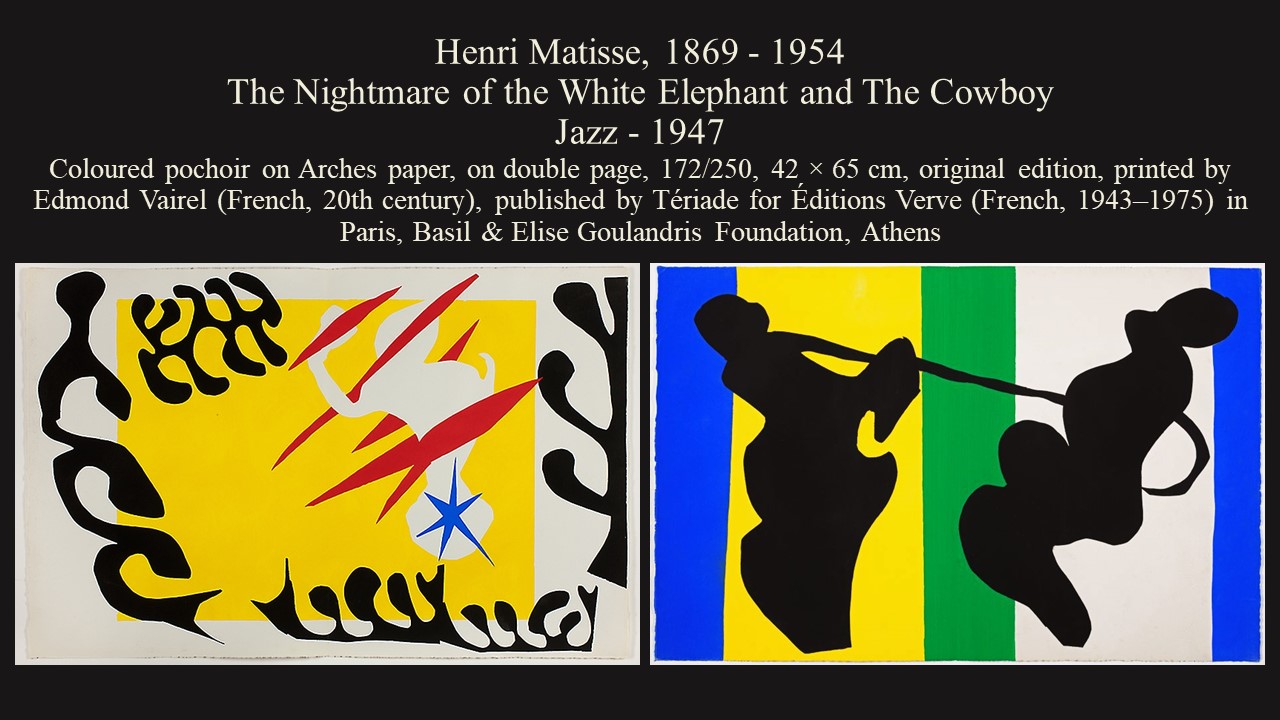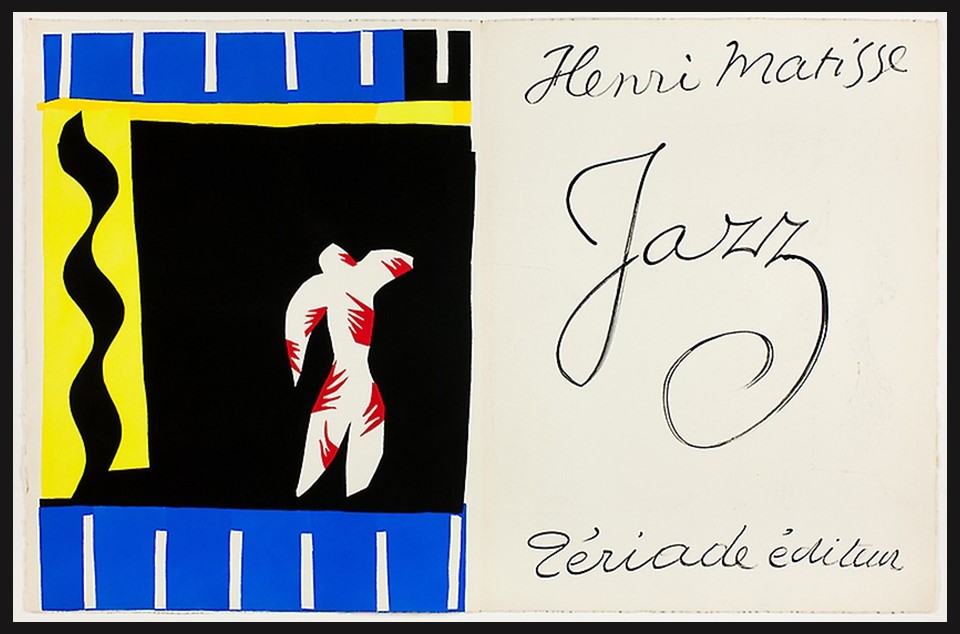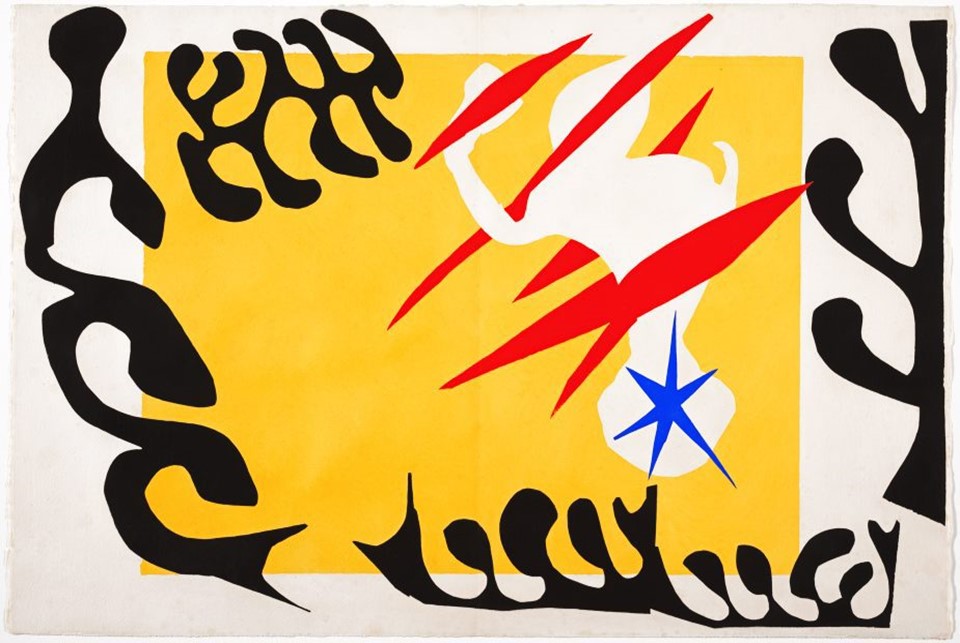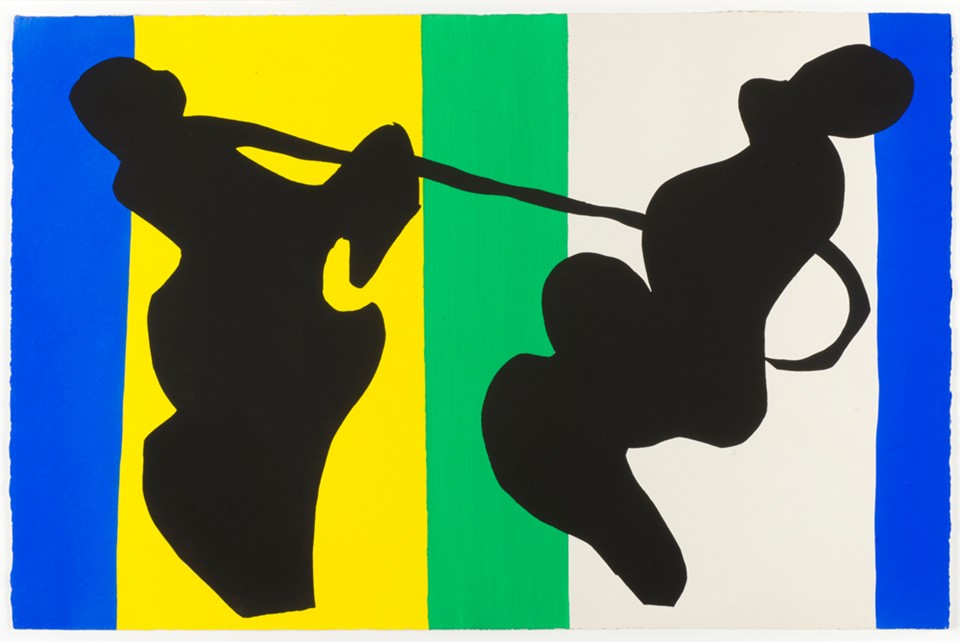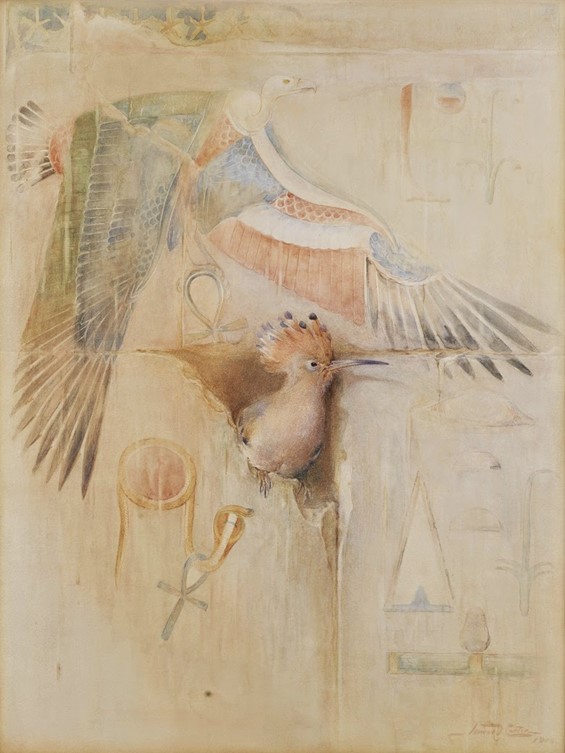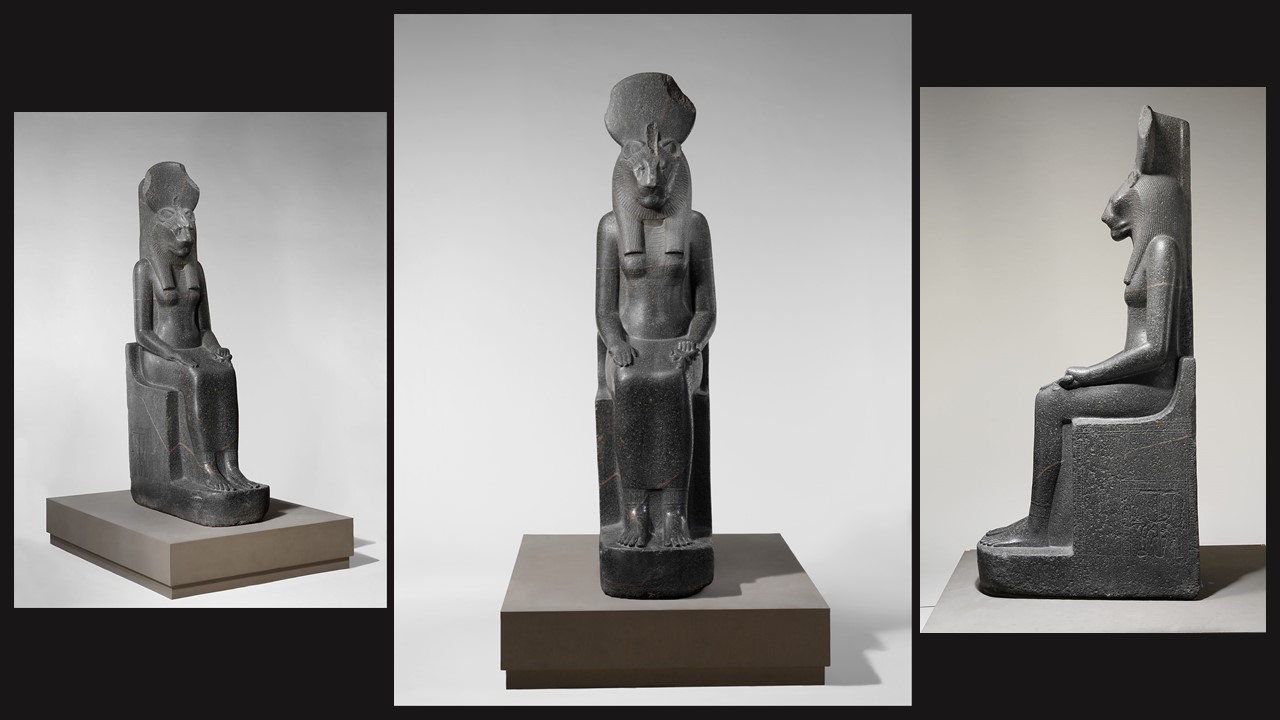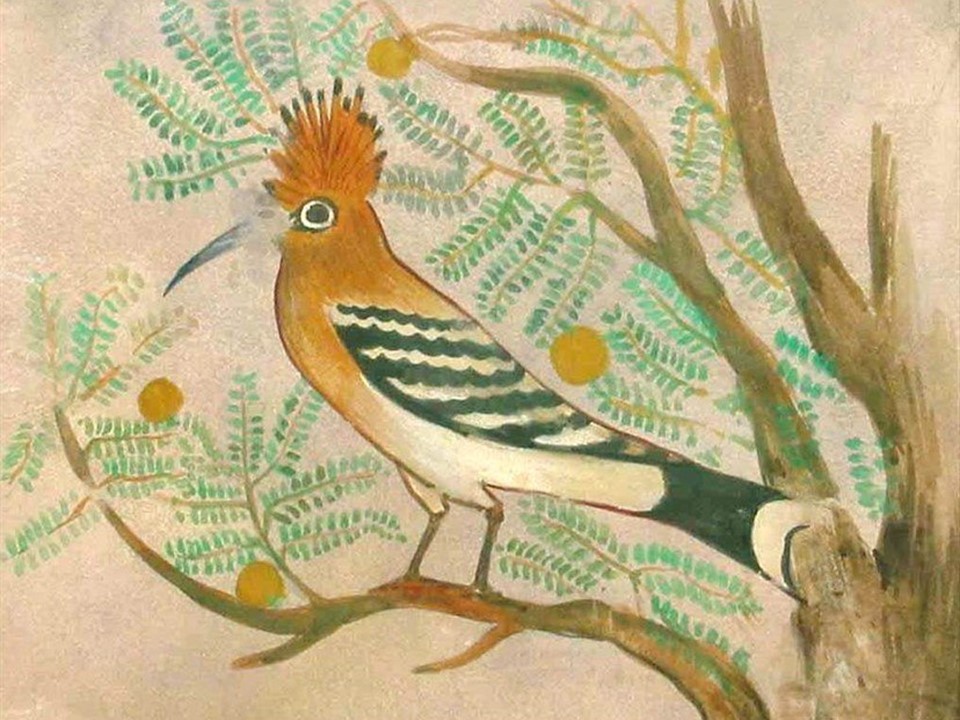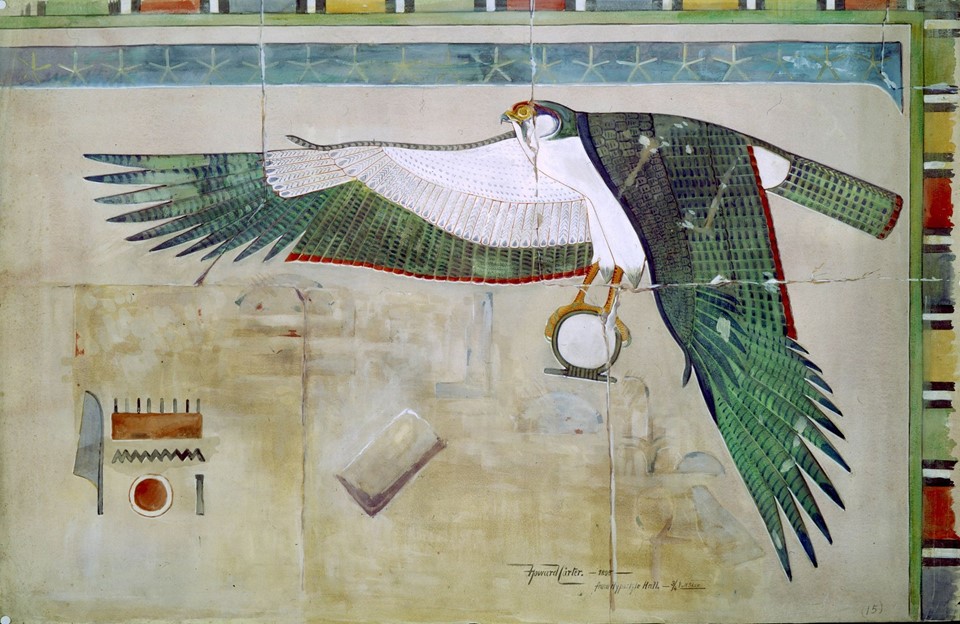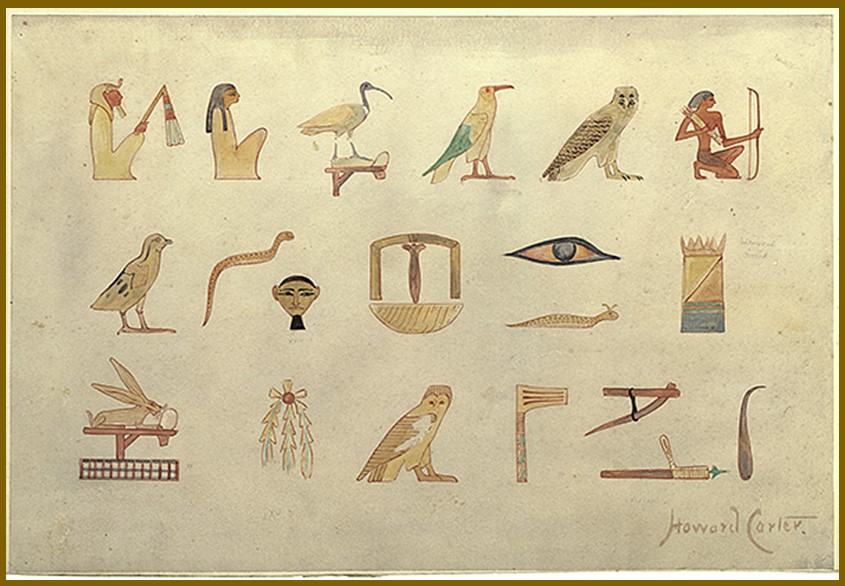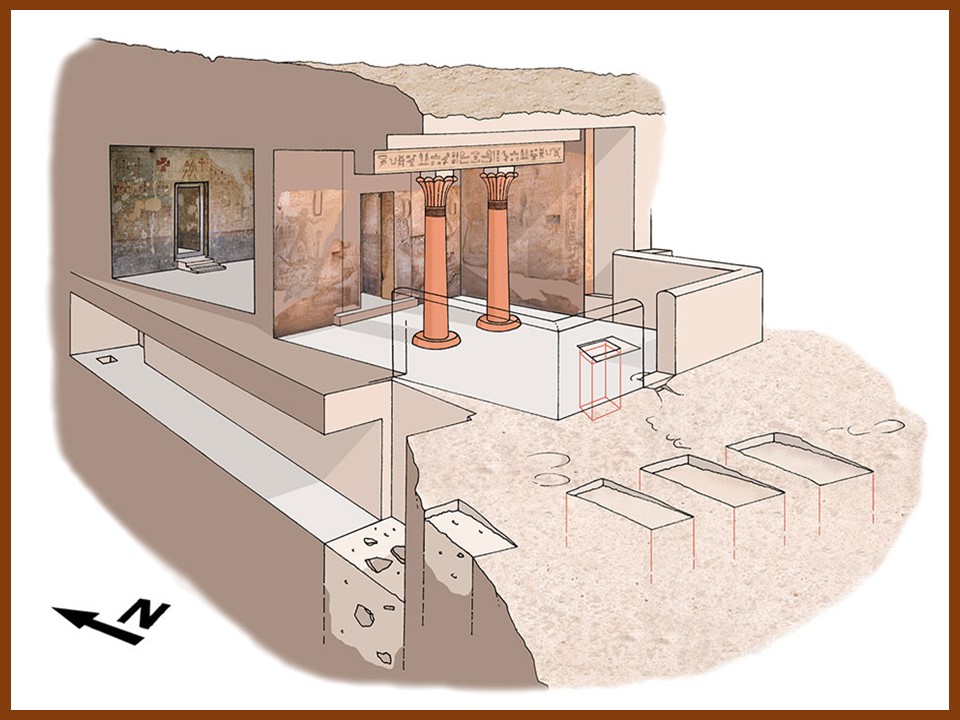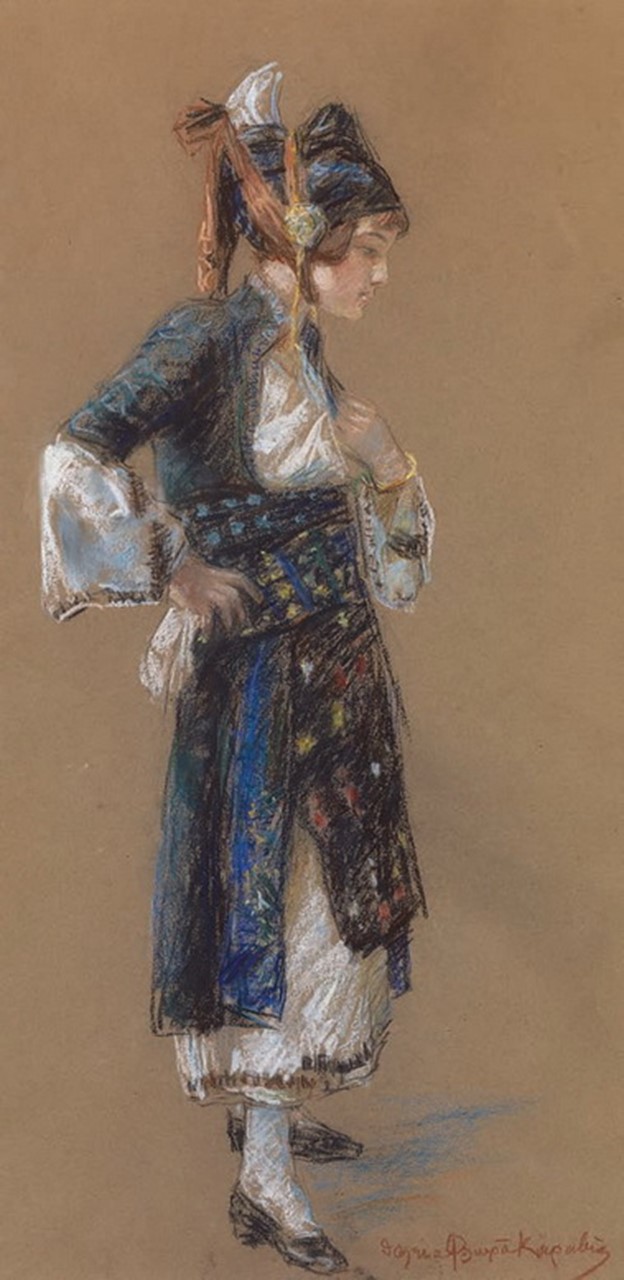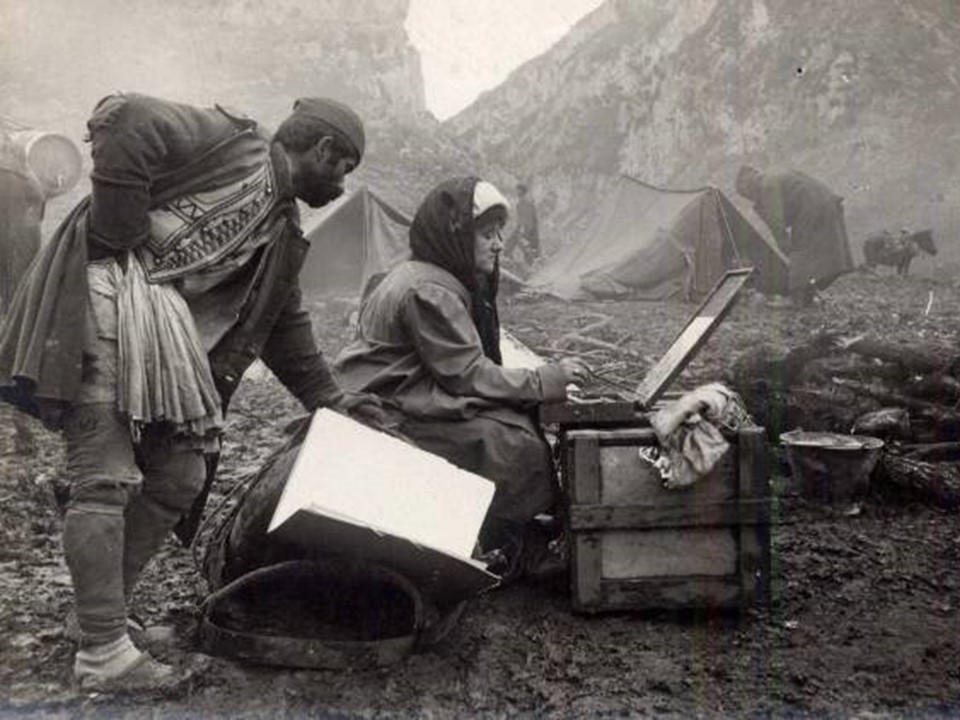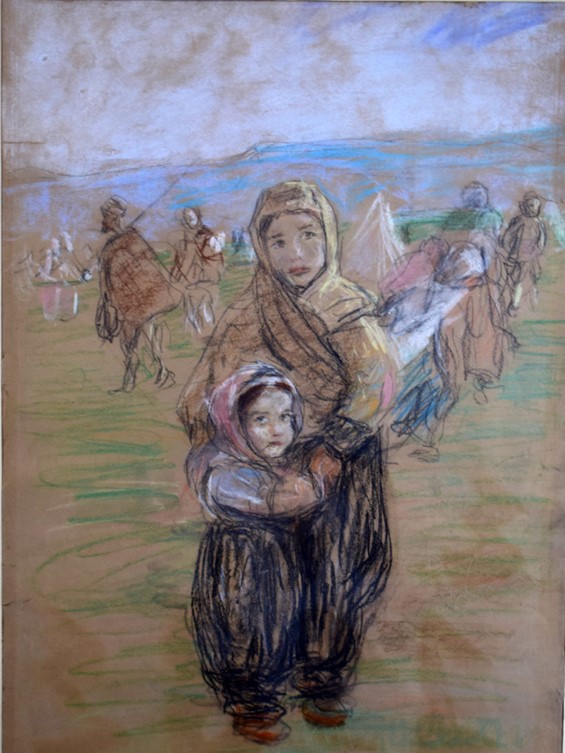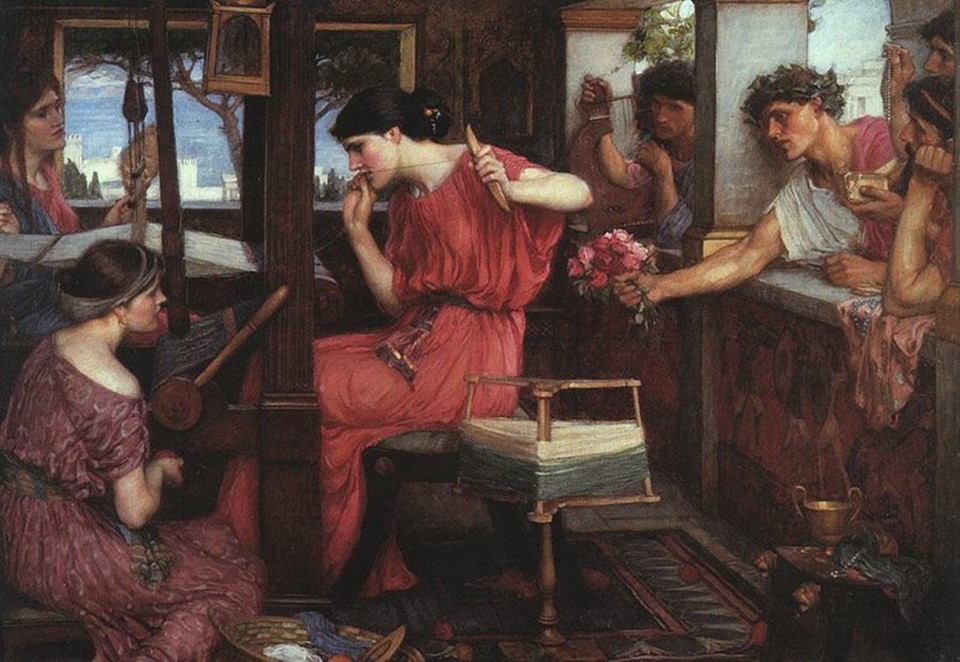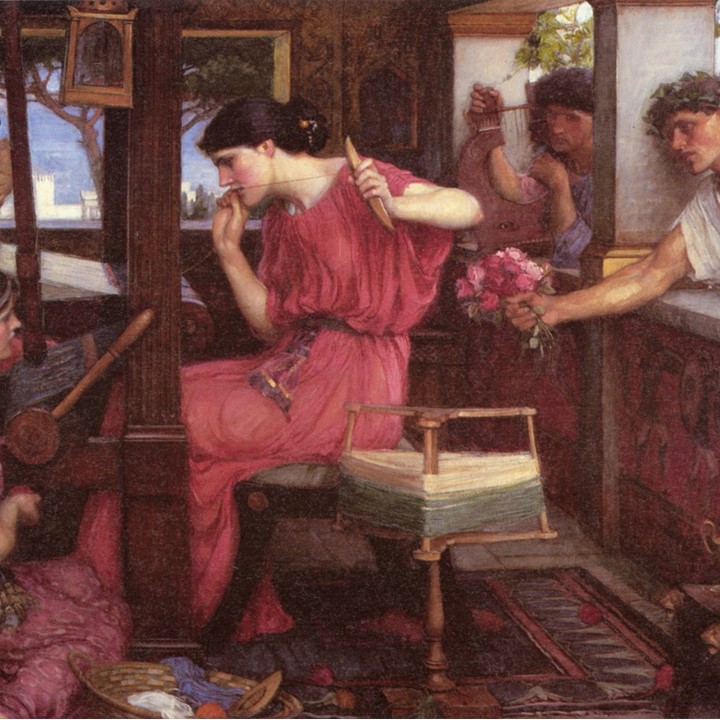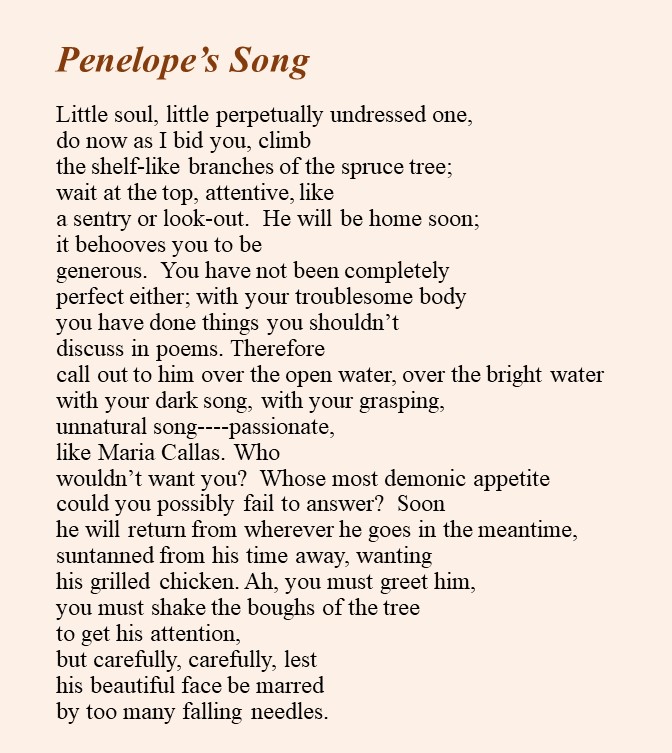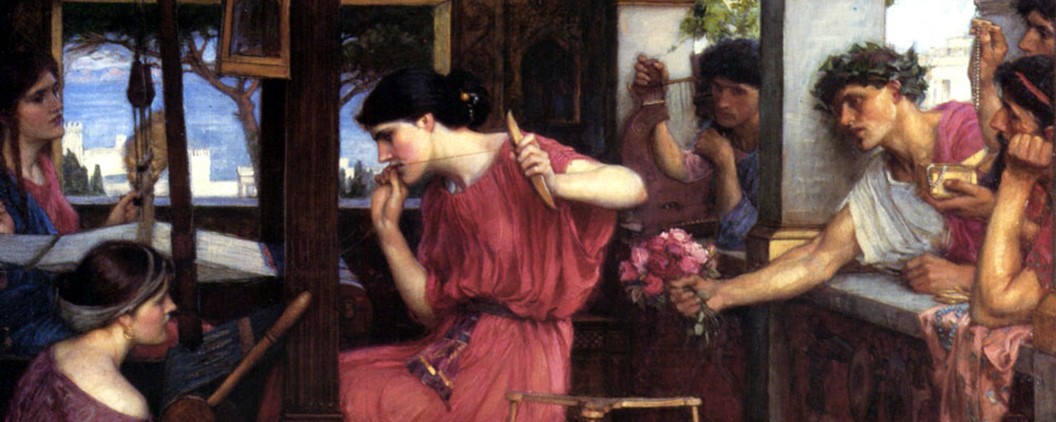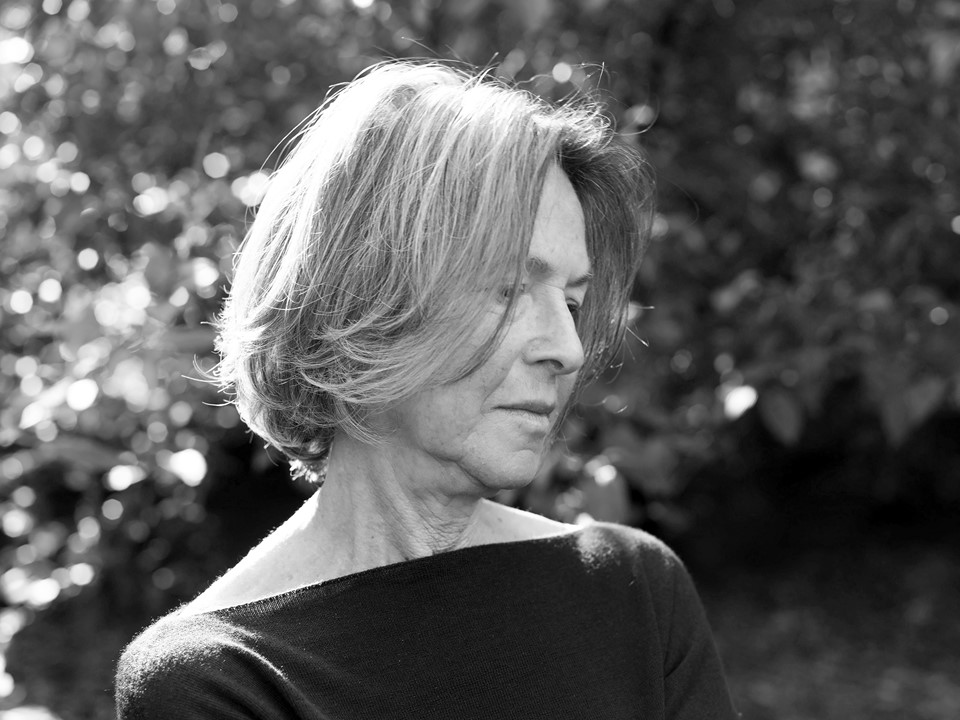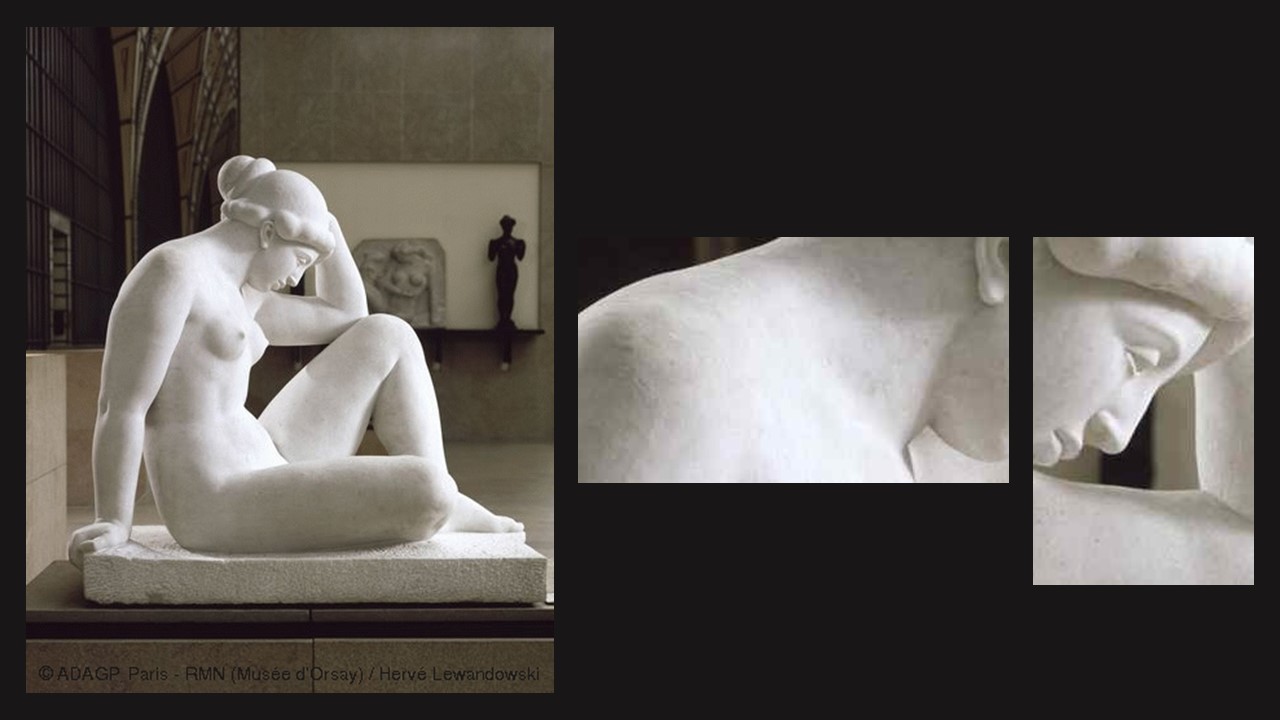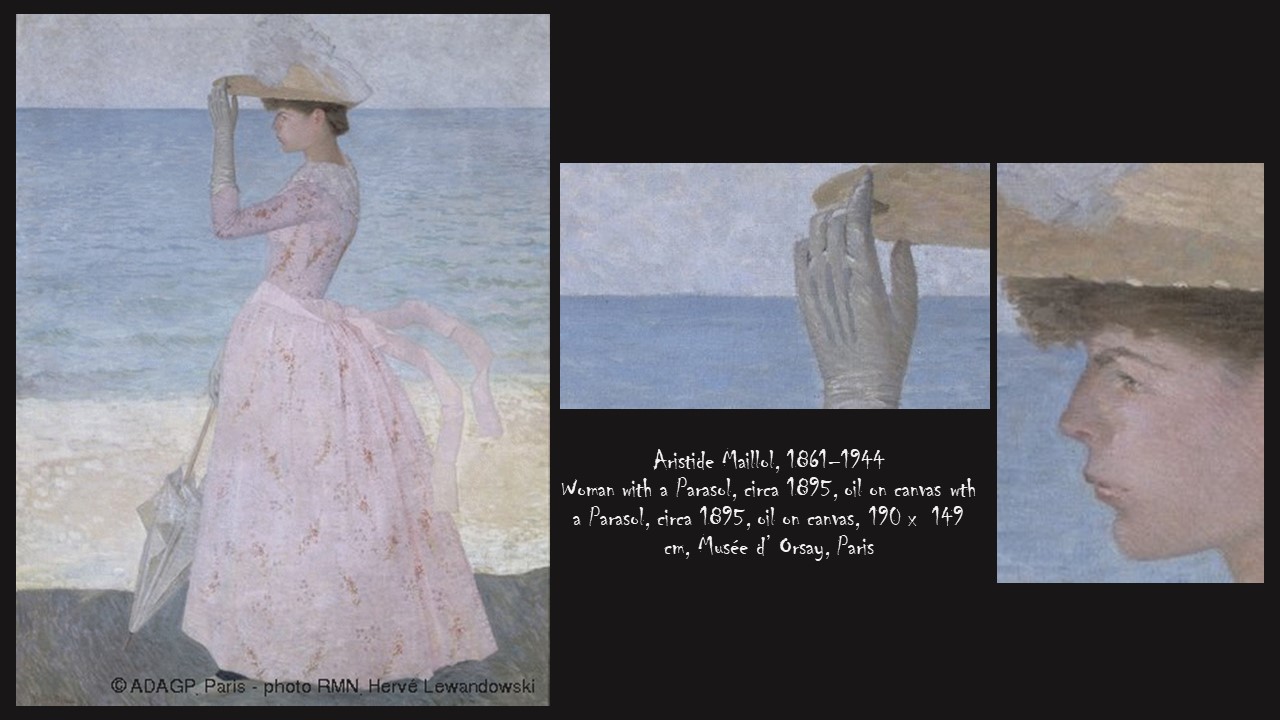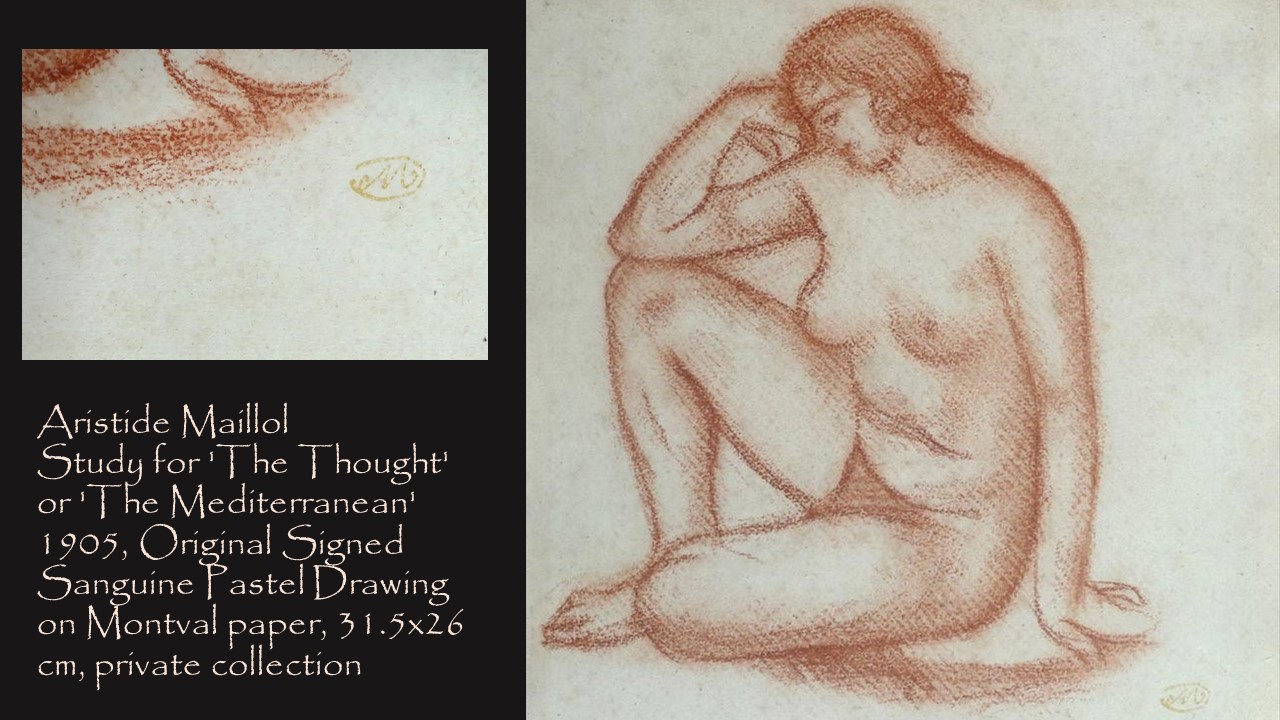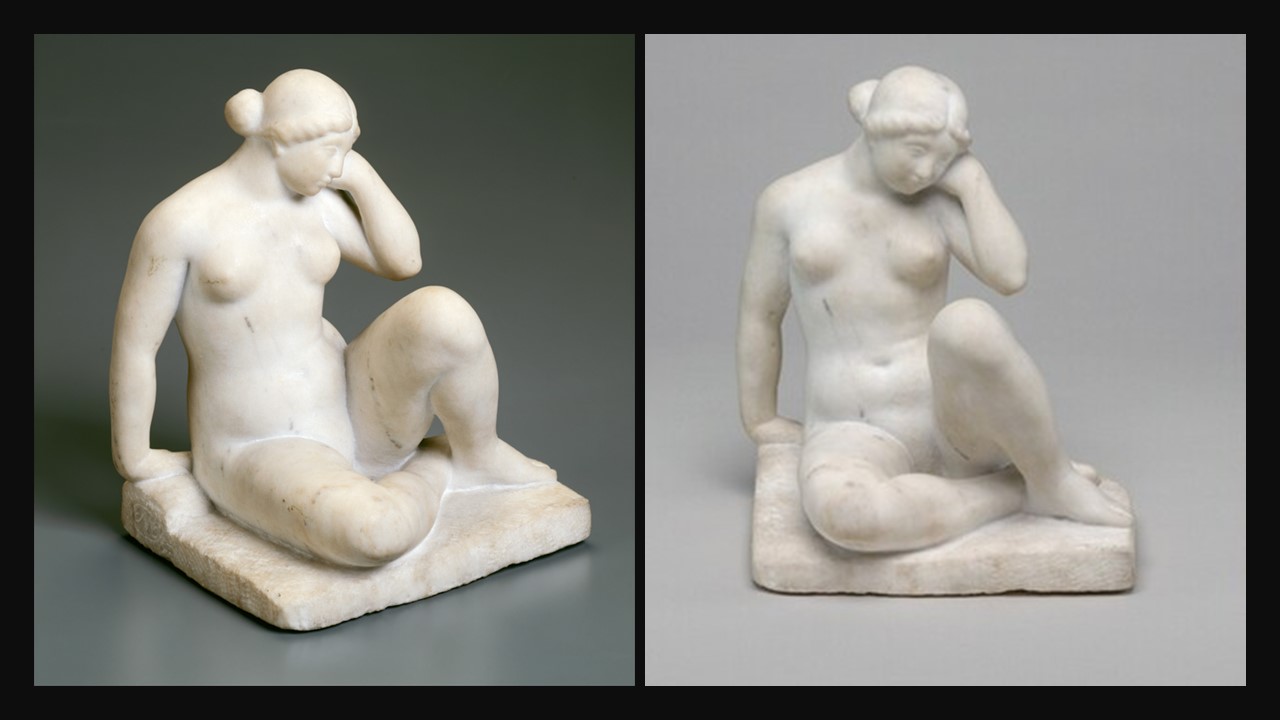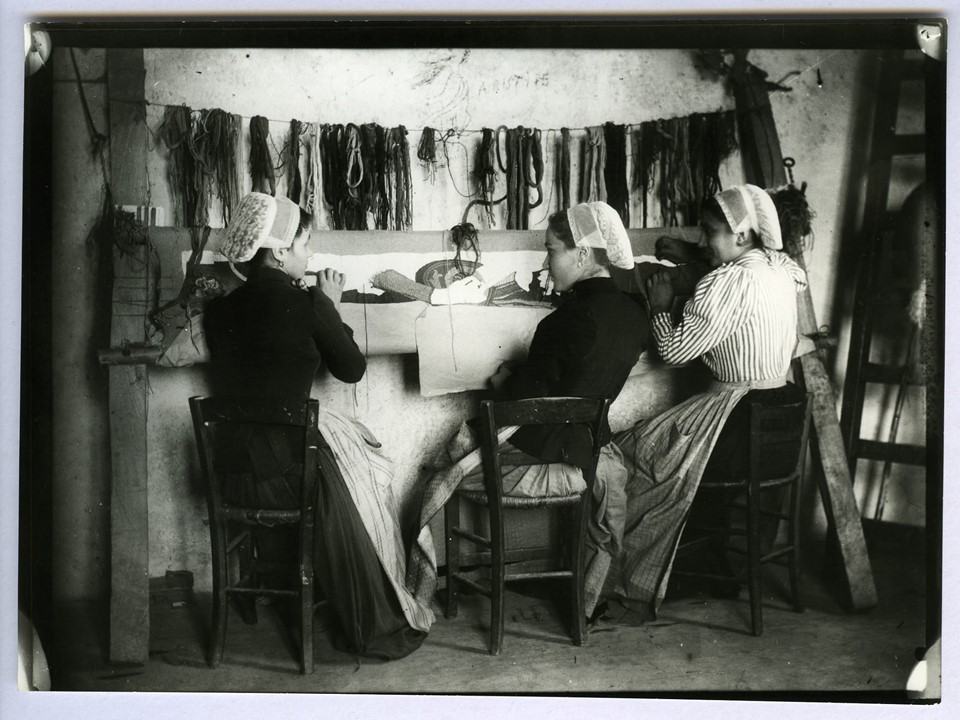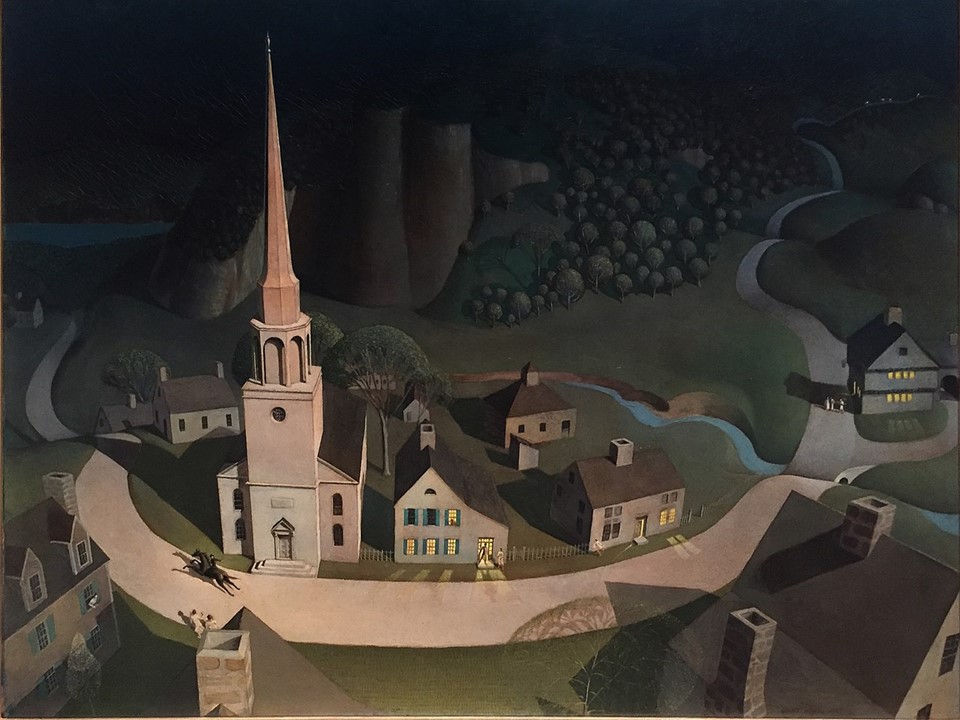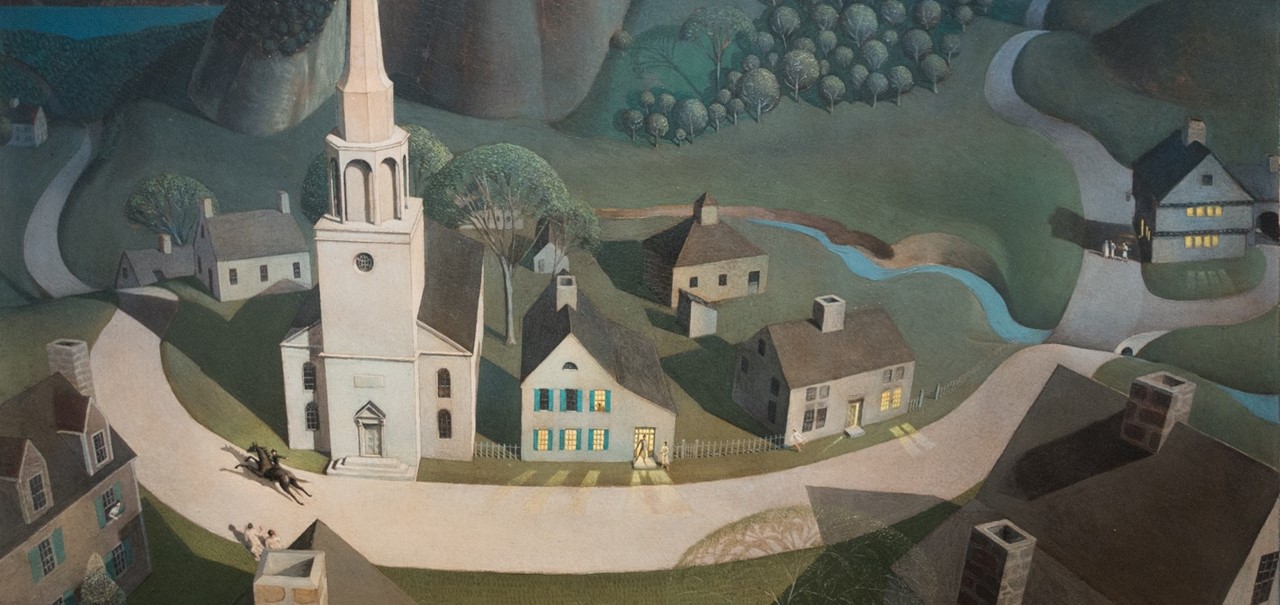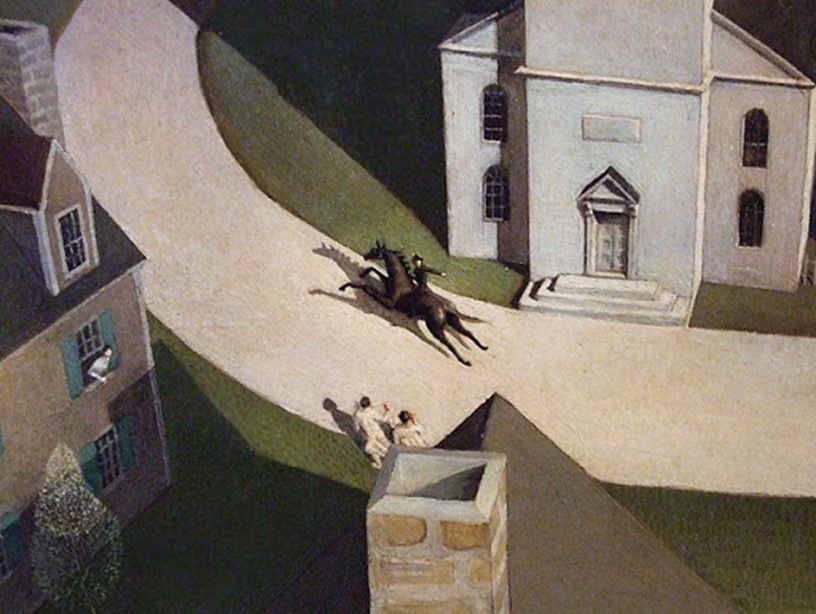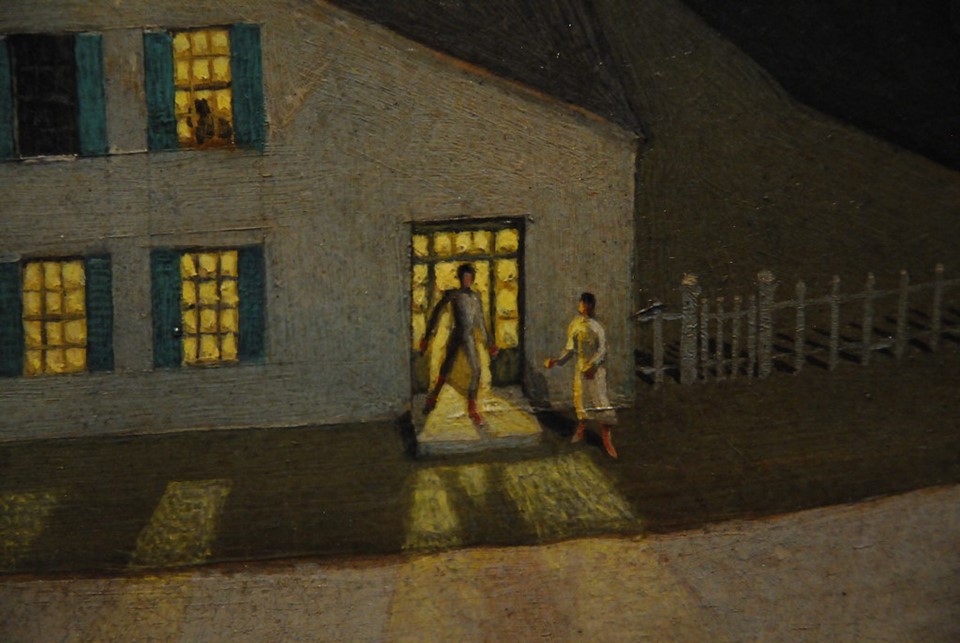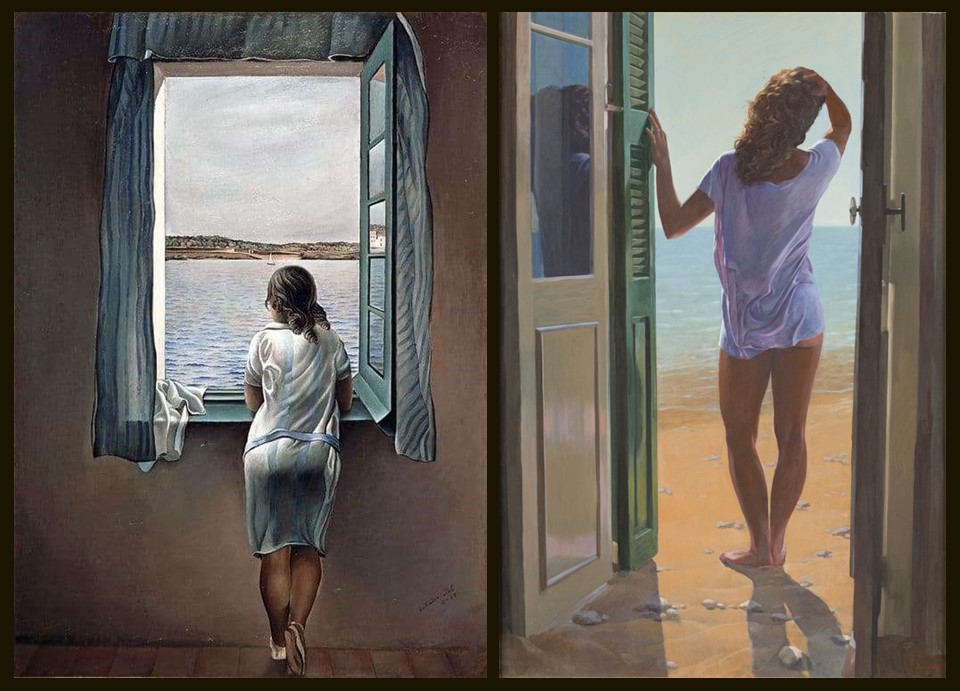
Figure at the Window, 1925, Oil on papier-mâché, 105 x 74,5 cm, Museo Nacional Centro de Arte Reina Sofia https://en.opisanie-kartin.com/description-of-the-painting-by-salvador-dali-woman-at-the-window/
Pavlos Samios, 1948 – 2021
Awaiting, 1983, Acrylic on canvas, 130 × 88 cm, Basil & Elise Goulandris Foundation, Athens https://goulandris.gr/en/artwork/samios-pavlos-awaiting
https://www.iefimerida.gr/politismos/paylos-samios-kafeneia-pethane
“She opened her curtains, and looked out towards the bit of road that lay in view, with fields beyond outside the entrance-gates. On the road there was a man with a bundle on his back and a woman carrying her baby; in the field she could see figures moving – perhaps the shepherd with his dog. Far off in the bending sky was the pearly light; and she felt the largeness of the world and the manifold wakings of men to labor and endurance. She was a part of that involuntary, palpitating life, and could neither look out on it from her luxurious shelter as a mere spectator, nor hide her eyes in selfish complaining…” wrote George Eliot (Mary Anne Evans, 1819-1880) in Middlemarch. I believe her quotation can be a wonderful introduction for my new BLOG POST, Salvador Dali or Pavlos Samios, inspired by Awaiting, a beautiful painting by Pavlos Samios in the Basil & Elise Goulandris Foundation in Athens. https://www.goodreads.com/quotes/tag/window
Mid-July 2021 and with COVID still ON, I am constantly in front of my open windows or balcony doors searching for signs of a summer break… eager to be freed. Two paintings, by Salvador Dali and Pavlos Samios, inspire me to dream, hope, and be …merry!
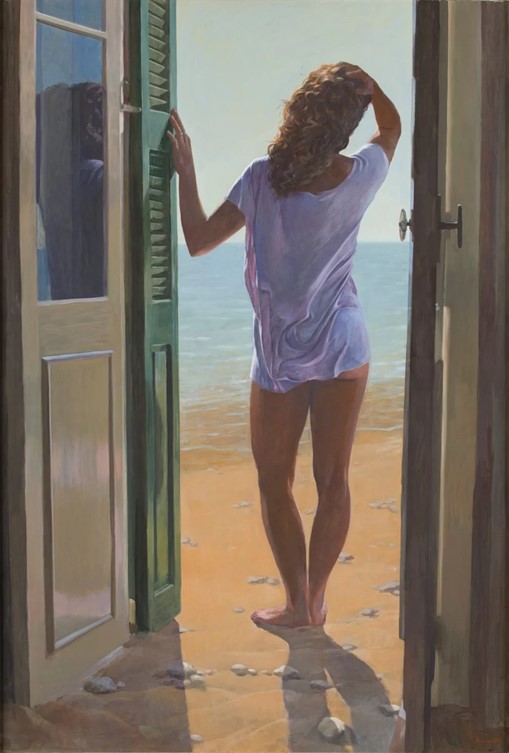
Awaiting, 1983, Acrylic on canvas, 130 × 88 cm, Basil & Elise Goulandris Foundation, Athens https://goulandris.gr/en/artwork/samios-pavlos-awaiting
https://www.iefimerida.gr/politismos/paylos-samios-kafeneia-pethane
Pavlos Samios is an artist I particularly like. His painting Awaiting in the Basil & Elise Goulandris Foundation in Athens is a favourite of mine. I also like what I read in his notes: In the early 1980s, the idea of Surrealism and the Metaphysical School greatly influenced me. In Paris, he continues there is little sun and the sea is far away, and yet, I dream of an unforgettable summer and I create a number of very nostalgic paintings. Fantastic buildings in the sand… The feeling of a desirable girl in a special place, on an untouched island. https://goulandris.gr/el/artwork/samios-pavlos-awaiting
On the 25th of November 2019, I “published” my first BLOG POST ON the amazing Art Collection of the Basil & Elise Goulandris Foundation in Athens I am constantly surprised how much this new addition to the Athenian Art Gallery circuit will enthuse me… https://www.teachercurator.com/category/basil-and-elise-goulandris-foundation-athens/
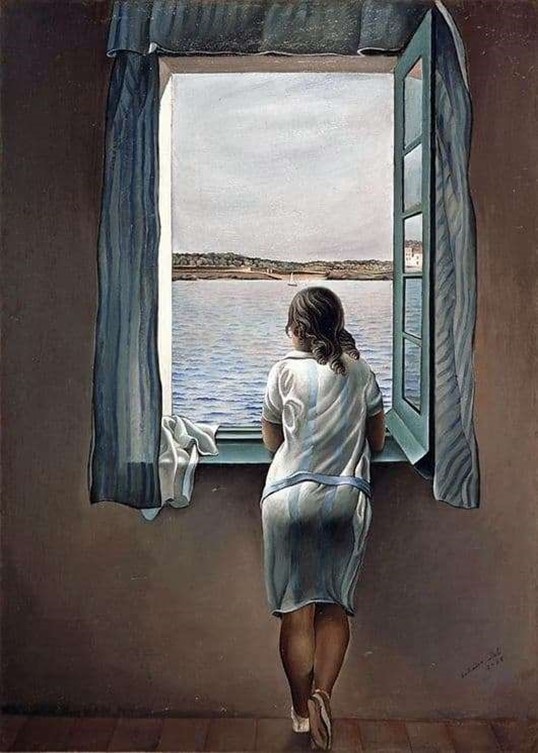
Figure at the Window, 1925, Oil on papier-mâché, 105 x 74,5 cm, Museo Nacional Centro de Arte Reina Sofia https://en.opisanie-kartin.com/description-of-the-painting-by-salvador-dali-woman-at-the-window/
When I first saw Samios’s Awaiting, I immediately thought of Salvador Dali and his1925 portrait of his sister Anna Maria in Figure at the Window, exhibited at the Museo Nacional Centro de Arte Reina Sofia in Madrid. A wonderful painting that “travels” you to magical places. I particularly like how the Spanish Museo experts describe the painting as a masterpiece of Dali’s series of portraits of Anna Maria and how Rafael Santos Torroella stated that the painting is a marvel for the skill with which it combines the occupied spaces and the empty spaces, giving them equal compositional importance to such an extent that the fact that he has simply eliminated one of the window casements (the left one) escapes the viewer, who does not even notice the anomaly, despite the fact that this is precisely where so much of the enigmatic beauty radiating from the painting, with its pure serenity, resides. https://www.museoreinasofia.es/en/collection/artwork/figura-finestra-figure-window
For a Student Activity on Salvador Dali or Pavlos Samios, please… Check HERE!
